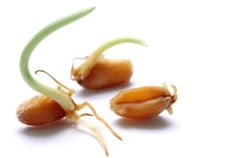REGINA – Four Saskatchewan pipeline companies will contribute a total of $125,000 over the next three years to help restore the province’s endangered burrowing owl population.
TransCanada PipeLines Ltd., TransGas Ltd., InterProvincial Pipe Line Inc. and Foothills Pipelines Ltd. announced a partnership project last week with Saskatchewan Environment, Nature Saskatchewan and the University of Saskatchewan.
Environment minister Lorne Scott said the money will be used to maintain existing programs and begin new research projects.
Despite the efforts of many people, the burrowing owl population continues to decline, he said.
Read Also

Manitoba community projects get support from HyLife
HyLife Fun Days 2025 donated $35,000 each to recreation and housing projects in Killarney, Steinach and Neepawa earlier this fall.
“Factors such as the loss of grassland habitat, reduced availability and diversity of prey, increasing numbers of predators, use of pesticides and urban expansion all contribute to the problem,” Scott said.
There are only about 800 pairs in Saskatchewan and the owls have been declared an endangered species. The recovery project hopes to increase the population to at least 3,000 pairs throughout the Prairies. The owls are also threatened in Manitoba and Alberta.
“It is estimated it will cost approximately $1.3 million over the next five years to implement a national recovery plan in Canada,” Scott said.
Nature Saskatchewan administers Operation Burrowing Owl in the province.
“I see (the new partnership) as a key effort to get at some of those questions that have been bugging us for some time as to why we’re still seeing a trend downward in the Prairies,” said executive director Curt Schroeder.
Numbers dropping
The recovery project will take place in the Regina Plains region, which includes 29,000 square kilometres in the Moose Jaw, Regina and Weyburn areas.
Sheila Fahlman, who farms near Kronau, has seen the burrowing owl population on her farm drop significantly since 1987.
That year, the Fahlmans were among the first farmers in the province to set aside habitat and predator-proof nest boxes for the owls. There were about 12 pairs then, but only four have returned this year.
Fahlman said she doesn’t know why fewer return each year, but a lack of habitat throughout the area is one reason.
“They like pasture land that is grazed,” she said. “They don’t like tall grass.”
She said the predominance of grain farming in the Regina Plains has made the owls’ traditional habitat unsuitable.
Dale Hjertaas, senior wildlife policy analyst for the province, said researchers don’t know where the owls migrate and habitat there could also be a problem.
He said the impact of pipelines is actually minor, because the companies have co-operated in reclaiming the areas they have disturbed. In some cases they have even re-routed pipelines.
Sandy Harkes, regional manager for TransCanada PipeLines, said the companies are conscious of their role in the environment.
“This is publicity for the birds, not for the companies,” he said. “Let’s focus on the birds.”















